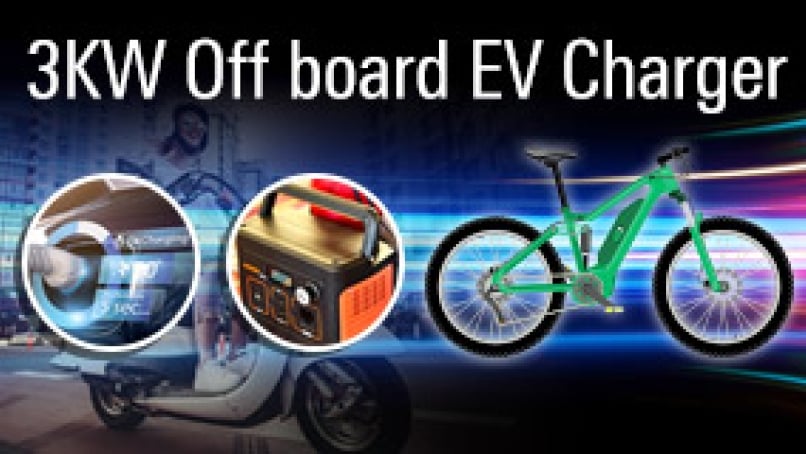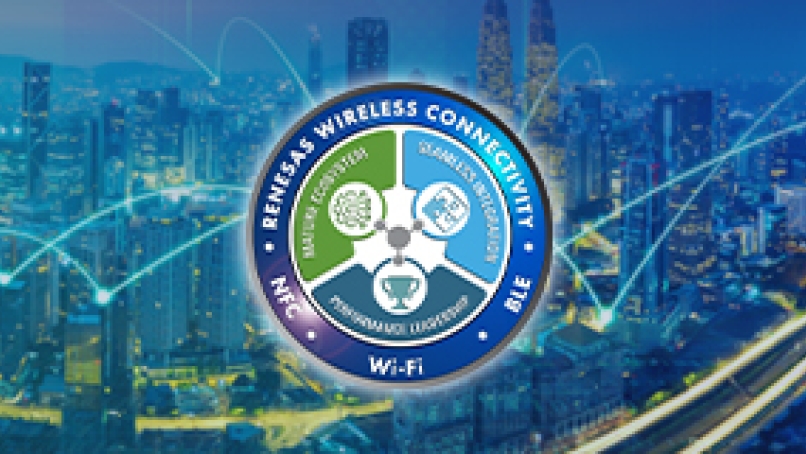Imagine coming home early, pulling into your driveway, and simply plugging in your EV, no detours, no crowded public stations, no waiting in line, just convenient, at-home charging while you unwind. Level 2 charging is the backbone of home, workplace, and light-commercial EV infrastructure, offering a straightforward plug-and-charge experience. But beneath that simplicity lies a sophisticated blend of power electronics, embedded firmware, precise energy measurement, and cloud connectivity. It's a carefully tuned system that ensures every charge is safe, efficient, and dependable. And while power delivery is essential, it's the need for reliability, security, and the ability to evolve through seamless software updates that will truly drive the global transition to electric mobility.
Understanding EVSE and the Importance of Level 2 Charging
Electric Vehicle Supply Equipment (EVSE) is the unsung hero behind every smooth charging experience, encompassing all the hardware and software that safely bridges the gap between the grid and an EV's battery. Beneath its sleek exterior, EVSE performs three critical roles that enable reliable, intelligent charging:
It manages power flow between the utility connection and the vehicle's onboard charger. It governs AC or DC conversion, power factor correction, and ensures compliance with evolving grid standards.
It ensures safety through integrated protections like overcurrent breakers, surge suppressors, and leakage detection (per UL 2231-2). EVSE makes certain that electricity only flows when all safety conditions are verified, keeping users and vehicles secure.
It facilitates communication using protocols like Open Charge Point Protocol (OCPP), it connects with back-end systems to exchange real-time status, enable remote commands, handle metering and billing, and deliver over-the-air updates.
In essence, EVSE transforms a simple plug-in into a sophisticated, dependable, and scalable energy handshake between vehicle and grid.
Among the various types of EVSE, Level 2 charging stands out as the most practical and widely adopted solution for everyday use, striking the ideal balance between the slow, low-power Level 1 charging and the ultra-fast but costly DC fast charging options. While Level 1 chargers, which deliver around 1.9kW, are suitable for overnight top-ups using standard household outlets, and DC fast chargers can replenish up to 80% of a battery's capacity in just 15 to 30 minutes, they are often prohibitively expensive and more suited for highway corridors or commercial hubs. In contrast, Level 2 chargers provide charging power ranging from 3.7kW up to 22kW on three-phase connections, enabling a full charge in approximately 4 to 6 hours. This makes them highly appealing for daily use, as they are powerful enough to meet the needs of most EV drivers while remaining affordable for both residential electrical upgrades and widespread public installations. Their versatility also allows them to be deployed effectively in diverse settings such as single-family homes, apartment complexes, workplaces, hotels, and light-commercial vehicle fleets. As EV adoption gains momentum due to a combination of government policies aimed at phasing out internal combustion engines by 2030 to 2040, increasing consumer demand, and rapidly declining battery costs, Level 2 chargers are emerging as the foundational layer of charging infrastructure. With built-in features like power factor correction and dynamic load management via OCPP, they support smarter, more sustainable charging that aligns with grid efficiency and renewable energy use.
Renesas' Level 2 EV Charger
The Renesas Level 2 EV Charger offers a modular solution that integrates everything from power delivery to connectivity.

Precision Power Delivery and Intelligent Metering: The charger supports 22kW AC output (32A, 3-phase 415V input) and includes key components like a 2-pole, 40A branch circuit protector and an SAE J1772™ EV connector with an 18-foot cable. Energy metering accuracy is held to ±1% through a tightly integrated analog front-end managed by the RA2A2 MCU, a 48MHz Arm® Cortex®-M23 device featuring high-precision ADCs, dual-bank flash for safe over-the-air firmware updates, and hardware security (AES, Secure MPU, Flash Access Window, TRNG). Calibration coefficients and application code are stored in the AT25SF081B serial flash, whose optimized erase blocks and secure-register pages ensure unique device serialization and tamper-proof key storage before being shadowed into RAM for real-time execution. Meanwhile, the iW1821 AccuSwitch™ digital PWM controller combines a 1200V Bipolar Junction Transistor (BJT) power switch with Renesas' PrimAccurate™ primary-side digital control algorithms, eliminating the need for optocouplers, delivering tight cross-regulation, smooth startup into large capacitive loads, and sub-50mW no-load power consumption in quasi-resonant mode to meet global efficiency standards and guarantee long-term reliability in both residential and commercial EVSE deployments.
Safety and Standards Compliance: Safety is non-negotiable in any EVSE design, and the Renesas Level 2 EV Charger incorporates multiple layers of protection to safeguard both users and equipment. A dedicated Charging Circuit Interrupting Device (CCID) monitors leakage currents with a trip threshold of just 5mA, meeting UL 2231-2's requirement for five independent CCID units and automatically resets after a 15-minute delay once the fault condition clears. Should the driver unplug the SAE J1772™ connector mid-charge, the charger instantly terminates its output voltage to prevent arcing or stray voltage on the cable. Underpinning these active protections is full compliance with key safety standards: UL 2231-1 and UL 2231-2 for personnel protection against electric shock, UL 2594 for stationary EV charging systems, and NEC Article 625 for safe installation and wiring methods. Together, these measures deliver a charger that not only meets but exceeds industry expectations for the user and grid safety.
Advanced Connectivity and Secure Networking: To keep chargers reliably connected in any deployment, the Renesas Level 2 EV Charger supports both local and wide-area communications. For sites without fixed broadband, a commercial CDMA or GPRS cellular modem provides uninterrupted WAN connectivity, ensuring that session data, metering logs, and firmware updates are delivered even in remote locations. Onsite, users can interact via:
- Wi-Fi: Powered by the DA16200MOD ultra-low power module, which combines the DA16200 System-on-Chip (SoC), 4MB flash, RF components (crystal oscillator, lumped filter), and either a chip antenna or external antenna connector. FCC, IC, and CE certified, it delivers long battery life and rapid time-to-market. The DA16200MOD provides reliable broadband access for OCPP messaging, remote diagnostics, dynamic load balancing, and over-the-air firmware updates, ensuring your charger stays connected to cloud platforms without additional RF design or regulatory effort.
- Bluetooth® Low Energy: Enabled by the DA14531MOD SmartBond TINY™ module—the world's smallest, lowest-power Bluetooth 5.1 SoC in an integrated form factor with onboard antenna. This lets field technicians or users pair via smartphone for local setup, HMI configuration, or firmware flashing without disassembling the unit or exposing network credentials. Its tiny form factor and low standby draw make it ideal for always-on access in residential or commercial settings.
- Near Field Communication (NFC): The PTX100R reader IC combines a sine wave hardware transceiver with Renesas' Direct Antenna Connection (DiRAC™) technology, delivering up to 2W of antenna drive and –80dB sensitivity for robust, long-range card detection. Fully EMVCo 3.0/3.1 L1 compliant and equipped with rapid debug features, it seamlessly handles secure tap-to-start authentication drivers. Simply present a pre-registered RFID card or NFC-enabled smartphone to the charger, and the PTX100R validates credentials in milliseconds and triggers the charging session. Because all NFC protocol handling, security checks, and key storage occur within this dedicated module, the main MCU firmware stays lean, and overall system security is strengthened against unauthorized access.
Intuitive Human Machine Interface (HMI): The charger's HMI is powered by Renesas' RA6M3 MCU, featuring a high-performance Arm Cortex-M4 core, an integrated TFT controller with 2D graphics accelerator, and a JPEG decoder for smooth, responsive displays. With onboard Ethernet MAC (complete with dedicated DMA) and USB High-Speed interfaces, the RA6M3 ensures rapid data throughput between the charger's sensors, metering engine, and external networks, minimizing lag when updating on-screen information. Built on a 40nm process and backed by the Flexible Software Package (FSP) on FreeRTOS, the MCU provides a modular ecosystem that can easily accommodate alternative RTOSes or middleware as your application evolves.
On the touchscreen display, users gain real-time visibility into charging status, including the kilowatts delivered, session duration, voltage, and current metrics. Customizable graphical widgets driven by the 2D accelerator allow fleet operators or homeowners to glance at progress bars, numerical readouts, and diagnostic alerts with crystal-clear clarity. Under the hood, the RA6M3's ample embedded RAM buffers smooth animations and supports future HMI enhancements, such as interactive menus for scheduling, load-management settings, or firmware-update prompts via USB or Ethernet — all within a single, integrated MCU solution.
Software Stack Offering: Renesas offers a turn-key, real-time software foundation for Level 2 EV chargers by providing fully tested OCPP 1.6 and OCPP 2.0.1 stacks that streamline development and ensure interoperability with central management systems. Both stacks are built atop a Real-Time Operating System (RTOS) that enforces deterministic task scheduling, critical for balancing charging control loops, communications, and user-interface updates. Networking is handled by the FreeRTOS™ TCP Plus libraries, which deliver robust support for both static and dynamic IP configurations, enabling installations on corporate LANs, home broadband, or DHCP-managed networks without code changes. To simplify user authentication and billing integration, an integrated RFID library is included out of the box, so you can read and process contactless cards or tags without writing low-level ISO/IEC 14443 code. The OCPP 1.6 stack focuses on essential charge-point operations—start/stop sessions, meter-value reporting, and transaction reconciliation while the OCPP 2.0.1 stack extends those capabilities with advanced features such as Smart Charging, Device Management, and Firmware Management, all of which have been fully integrated, validated, and debugged against industry-standard test suites. Security is front and center: the OCPP 2.0.1 stack leverages the MCU's on-chip cryptographic engine to implement Transport Layer Security (TLS) for encrypted transport, authenticated sessions, and secure certificate handling, protecting both user data and firmware update channels. For HMI, the OCPP 2.0.1 offering includes an emWin-based HMI framework, allowing developers to create rich graphical touch interfaces—menus, status indicators, and diagnostics screens—without starting from scratch. By combining these software components into a unified package, Renesas eliminates the fragmentation and integration headaches often associated with multi-vendor solutions, accelerates time to market, and ensures that your Level 2 EV charger firmware is not only compliant with the latest protocol versions but also secure, maintainable, and future-proof.
Mobile App Integration: Beyond local UI and back-end OCPP management, the charger's Wi-Fi and cellular link also support integration with third-party mobile apps. Through a secure API, drivers can launch an app to check real-time charging status (kW delivered, session duration), view billing summaries, and even pay for their charging session directly from their phone. All communication is encrypted end-to-end, and the app ties into the charger's RFID and OCPP stack to authenticate users, reconcile meter values, and trigger session start/stop commands, giving fleets and public-station operators a fully app-driven experience without any extra wiring or custom firmware on the charger itself.
Conclusion
Electric vehicles are changing how we think about transportation, but that shift only works if the charging experience keeps up. The Renesas Level 2 EV Charger demonstrates how modular design, embedded security, robust connectivity, and the OCPP software stack come together to create a dependable charging solution. Whether you're rolling out residential home chargers or managing large commercial fleets, Renesas' comprehensive ecosystem of hardware, firmware, and software empowers you to build differentiated EVSE products that are safe, efficient, and ready for the next generation of electric mobility. With every charge session, it helps build a more resilient grid, a more efficient energy ecosystem, and a practical foundation for electrification at scale. To see this solution and other Winning Combinations from Renesas, please visit www.renesas.com/win.




